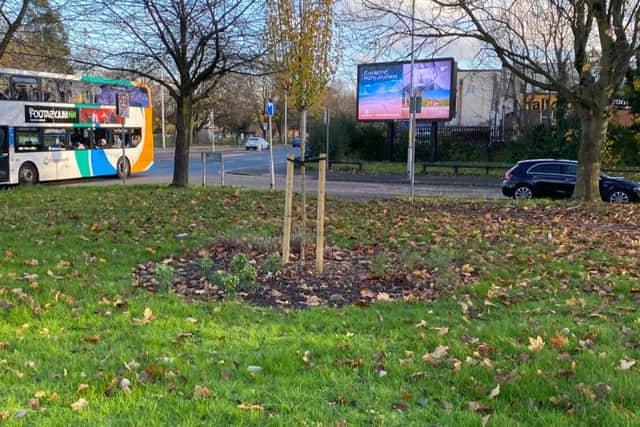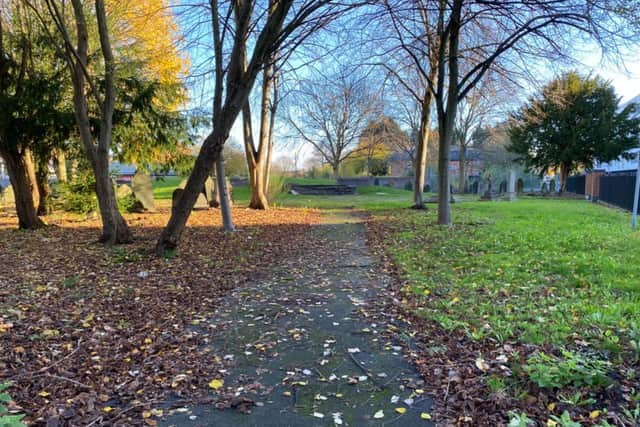Ardwick Stepping Stones: climate group unveils plan for trail of green spaces connecting to city centre
and live on Freeview channel 276
A Manchester climate group has unveiled its ambitious plan for a green corridor of 10 “stepping stones” connecting its local neighbourhood to the city centre.
Ardwick Climate Action is creating a route linking the green spaces from the Mancunian Way to a location close to Oxford Road and The University of Manchester, which is one of the partners for the project. The Ardwick Stepping Stones involve creating beautiful green spaces between the area and the city, with ideas including wildflower meadows, bird and bat boxes, fruit and veg growing and tree planting.
Advertisement
Hide AdAdvertisement
Hide AdThe group hopes to restore some of the nature which has been lost in Manchester in recent decades while also raising awareness of climate change and environmental issues, and wants the whole trail to be fully ready for people to try out by the first half of 2024.
What are the Ardwick Stepping Stones?
The Ardwick Stepping Stones are 10 green projects located between Ardwick itself and Manchester city centre which are being turned into a trail of nature-friendly locations. The project is a joint effort between Ardwick Climate Action, the university, Manchester Museum and the council.
The locations of the stepping stones and what will be there when the project is finished is as follows:
• The Mancunian Way. Pollution-friendly plants will serve as a barrier for residents from the noise and emissions on one of the city’s busiest vehicle routes. There will also be planters and hanging barrier boxes containing native plants.
Advertisement
Hide AdAdvertisement
Hide Ad• Kale Street. The green will be surrounded with hedging and there will be urban plants, a central tree, a wildflower area and picnic pods.
• Tree Pits. Along the central reservation from the roundabout at the Apollo venue to the Mancunian way, 17 tree pits have now been planted with over 800 bulbs. When the group closed the A6 last year for a climate awareness event the pits were checked and now all 17 of them contain healthy trees.
• Ardwick Green Park. Work to create a hedge along the border of the park has already begun and this will be continuing into 2024. The idea is to create a green barrier from the A6 to reduce pollution for residents.


• Medlock Primary School. The school’s entrance at Coral Street now has a border with plants, climbers and ivy as well as planters to discourage parking. There are plans to work with the school to develop an embankment on site and to lobby the council for a crossing on the A6.
Advertisement
Hide AdAdvertisement
Hide Ad• Grosvenor Street. The group is planning to audit the health of the trees on the street and in the local area to work out if quotas have been met by the council and property bodies. There are plans for more planting on the street as well.
• Craigwell Walk. A triangular patch of land will have raised beds installed for fruit and veg planting and there will be a mini-orchard so Ardwick residents can collect free produce throughout the year.
• The Subway. This is an area which has suffered with major drainage problems and where the underpass is not accessible for disabled residents. The plan at Lamport Court is for a large wildflower meadow and bulb planting with planters for residents to use, and suitable bulbs to be put in a semi-woodland area.
• Kincardine Road. The plan is to create a wildflower meadow along a 0.2km strip of land bordering Gartside Gardens, where previous attempts to improve the amount of greenery have failed.


Advertisement
Hide AdAdvertisement
Hide Ad• St Saviour’s Church. This city centre location marks the end of the stepping stones trail and is where Ardwick Climate Action wants to establish what it is calling its “future site”. On the site of a now-demolished church the group hopes to raise awareness of how climate change is altering conditions in the city for residents by creating a Mediterranean-style garden highlighting how plants which previously would not have survived in the UK are now able to thrive in Manchester due to warming temperatures.
The project also includes communal compost bins for the green sites and installing dozens of bird and bat boxes at the stepping stones to boost biodiversity. The group, which secured funding from the Greater Manchester Environment Fund to make the project a reality, is working a number of organisations on the digital interactive signs that will offer people following the stepping stones information about the sites’ history as well as the work that has been done and how that relates to environmental and conservation efforts.
Ardwick Climate Action is also working to ensure a local grassroots group or organisation is able to take on the maintenance of each of the sites.
What has the group said about the stepping stones project?
Daniell Musaheb from Ardwick Climate Action said: “The idea is to link the deprived area of Ardwick back up to the city centre. We reckon Ardwick has lost about 65% of its green space in the last few decades with housing going up in the area and roads being built meaning green space has been concreted over. Pollution along the A6 is also over World Health Organisation levels on a normal day.
Advertisement
Hide AdAdvertisement
Hide Ad“We’re incorporating a lot into this, it’s a big undertaking. Our first big event on this will be in February when we’re hoping to have more than 100 students and volunteers from the university helping us, which will be lovely.
“One thing that really excites us is the future site. We’re going to apply for Lottery funding to make it as big as it can be. We want to highlight the advancing, warming climate there with a Mediterranean-style garden.
“We’re also talking at the moment about the signage so people understand the local history of each site, what was there before, what has been planted and the effect on biodiversity. We want it to be an all-encompassing education for residents and anyone who comes down to look at what’s going on.”
Comment Guidelines
National World encourages reader discussion on our stories. User feedback, insights and back-and-forth exchanges add a rich layer of context to reporting. Please review our Community Guidelines before commenting.
